Briarcliff College
|
Dow Hall within Pace University, 2015 | |
Former names |
|
|---|---|
| Type | Private |
| Active | 1904–1977 |
| Location | Briarcliff Manor, New York |
| Campus |
|
 Briarcliff College Location of Briarcliff College  Briarcliff College Location of Briarcliff College  Briarcliff College Location of Briarcliff College | |
| Coordinates | 41°08′18″N 73°49′29″W / 41.138443°N 73.824842°WCoordinates: 41°08′18″N 73°49′29″W / 41.138443°N 73.824842°W |
Briarcliff College was a women's college in Briarcliff Manor, New York. The school was founded as Mrs. Dow's School for Girls in 1903 at the Briarcliff Lodge. After Walter W. Law donated land and a building for the college, it operated at its location at 235 Elm Road in Briarcliff until 1977; closing due to low enrollment and financial problems. Pace University subsequently operated it as part of its Pleasantville campus from 1977 to 2015. In an effort to consolidate its campuses, Pace University sold the campus in 2017 to the Research Center on Natural Conservation, a host of conferences relating to global warming and conservation.
History
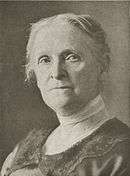
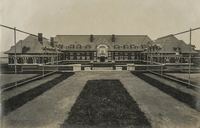
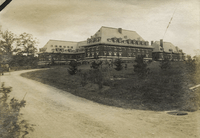
Mrs. Dow's School for Girls was founded in 1903 at the Briarcliff Lodge; two years later, Walter W. Law gave Mary Elizabeth Dow 35 acres (14 ha) and built the Châteauesque Dow Hall (Harold Van Buren Magonigle was its architect[1]). Dow retired in 1919 and Edith Cooper Hartmann began running the school with a two-year postgraduate course; the school became a junior college in 1933.[2](p71) Briarcliff remained a junior college until 1957, shortly before the presidency of Charles E. Adkins and when it began awarding four-year bachelor's degrees.[2](p182)[3] The school library, which had 5,500 volumes in 1942, expanded to about 20,000 in 1960. By the time of its closing, it had about 300 students.
The school prospered from 1942 to 1961 under President Clara Tead, who had a number of accomplished trustees, including Carl Carmer, Norman Cousins, Barrett Clark, Thomas K. Finletter, William Zorach, and Lyman Bryson. Tead's husband Ordway Tead served as chairman of the board of trustees. The school gradually improved its academic scope and standing, and was registered with the State Education Department and accredited by the Middle States Association of Colleges and Schools in 1944. In 1951, the Board of Regents authorized the college to grant Associate of Arts and Associate of Applied Science degrees. The following year, the Army Map Service selected the college as the only one in the country for professional training in cartography.[2](pp181–8)
In 1944, Shelton House, a building across Elm Road, was purchased as a dormitory, and a classroom and office wing was dedicated in 1951. In 1955, after Howard Deering Johnson joined the board of trustees, the dormitory Howard Johnson Hall was built. From 1963, Briarcliff College rapidly expanded, constructing two dormitories, the fine arts and humanities building, the Woodward Science Building, and a 600-seat dining hall. In 1964, the college began offering the Bachelor of Arts and of Sciences degrees. The Center for Hudson Valley Archaeology was opened in 1964. Enrollment at the college jumped from around 300 to over 500 from 1960 to 1964; by 1967, enrollment was at 623, with 240 freshmen. During the Vietnam War, students protested US involvement, and Adkins and trustees resigned; James E. Stewart became president. In 1969, twelve students, led by student president Edie Cullen, stole the college mimeograph machines and gave nine demands to the college. The next day, around 50 students participated in a 48-hour sit-in at Dow Hall. Josiah Bunting III became president in 1973 and Pace University and New York Medical College of Valhalla began leasing campus buildings. The college had 350 students in 1977, and students enjoyed half-empty dormitory buildings.[2](pp71, 181–8)
With the growing popularity of coeducation in the 1970s, Briarcliff found itself struggling to survive. President Josiah Bunting III leaving for Hampden-Sydney College in spring 1977 contributed to the problems the college was having. Rather than continue to struggle, the college's trustees voted to sell the campus to Pace University, a New York City-based institution. Rather than merge Briarcliff with Pace, the trustees attempted to reach a collaboration agreement with Bennett College, a junior women's college in nearby Millbrook which was also struggling with low enrollment. The plan did not work, however, and Briarcliff College was sold to Pace in April 1977 for $5.2 million ($20.6 million in 2016[4]) after both Briarcliff and Bennett entered bankruptcy.[2](pp181–8)[5]
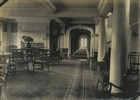
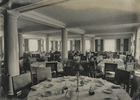
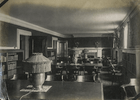
| Enrollment in Briarcliff College[2](pp183, 186) | |||||||||||||||||||||
|---|---|---|---|---|---|---|---|---|---|---|---|---|---|---|---|---|---|---|---|---|---|
| Year | 1942 | 1951–52 | 1960 | 1964 | 1967 | 1977 | |||||||||||||||
| Enrollment | 42 | 220 | 300 | 500 | 623 | 350 | |||||||||||||||
In 1988, the Hastings Center moved to Tead Hall, the school's library; the organization later moved to the town of Garrison.[2]:187–8[6]
The original Mrs. Dow's School building remains as the co-ed residence hall Dow Hall at Pace University. Residents of Briarcliff Manor were initially pleased to have another educational institution at the site, although Pace illegally turned its 188-spot parking lot into an 800-spot one, and allowed an extensive number of cars to be parked on the neighboring streets. The village government and school eventually reached a compromise.[7]
Pace operated the site as part of its Pleasantville campus, centered on Choate House.[8] The site currently has nine buildings with a combined 330,308 square feet (30,686.6 m2), with sizes from 13,041 to 111,915 square feet. The buildings were used for offices, student housing, dining, recreation and education. The campus' 37 acres (0.1 km2) also includes tennis courts and ball fields.[9] The Pleasantville site is about 3 miles (4.8 km) away from the Briarcliff College site.[10] In an effort to consolidate Pace University's Westchester County campuses into a single location, Pace University put the site up for sale in 2015.[9] In October 2016, the Briarcliff Manor-Scarborough Historical Society hosted an event at Dow Hall to raise awareness of the building and its history, in order to encourage its preservation.[11] In January 2017, Pace sold the property for $17.4 million to the Research Center on Natural Conservation, a nonprofit organization that hosts conferences relating to global warming and conservation. The China-based nonprofit also owns the nearby Arden estate and the New York Military Academy.[12]
Classes
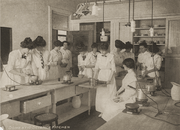
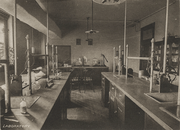
Around 1917 at Mrs. Dow's School, an art assistant taught classes in drawing, painting, and modeling. In addition to their daily tasks, the students prepared monthly compositions which would be critiqued by the school's art director Frank DuMond through a lecture.[13](p15) Art history classes included that of Italian Renaissance painting and sculpture, Western European painting, and the history of Greek sculpture, architecture, and interior decoration.[13](p13)
Mrs. Dow's also held lessons in ear training, elementary harmony, guitar, mandolin, piano, singing, and violin. The school also held occasional informal recitals, and allowed students to attend operas and concerts in New York City. Concerts and lectures were held at the school by notable artists, including Daniel Gregory Mason, Guiomar Novaes, Leonard Borwick, Percy Grainger, Efrem Zimbalist, Emilio de Gogorza, the Flonzaley Quartet, and the Kneisel Quartet.[13](p15)
Science classes at Mrs. Dow's around 1917 included Physiology, Botany, Chemistry, General Science, and Domestic Science. The latter class involved different curricula each term: dietaries, cookery, household administration and care, food chemistry, and (advanced) cookery.[13](p9) Mrs. Dow's held psychology, history of philosophy, political economy, social science, and ethics and logic classes.[13](p13)
Mathematics classes around that time included Algebra, Plane Geometry, Solid Geometry, Trigonometry, and Arithmetic and Accounts.[13](p9) Other classes included Dramatic Expression, Bible (required every Sunday), and Poetry (required every Monday).[13](p13)
Activities and clubs
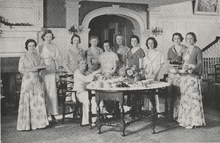
Sports
In 1917, Mrs. Dow's required a physical examination for each student, including a doctor's certificate ensuring their heart and lung health. The school limited its student assignments to allow two hours of outdoor exercise daily. Sports included basketball, field hockey, soccer, and tennis.[13](p15)
Lawn Tea
Briarcliff College operated numerous clubs, including one honorary organization, called Lawn Tea. The organization planned social events for the college, and served as the official hostesses for visiting guests. It was the oldest club there. Members were chosen for their "social charm, capabilities, and poise".[14][15]
Notable people

Presidents
- Mary Elizabeth Dow (1903–1919)
- Edith Cooper Hartmann (1919-)
- Doris Flick (-1942)
- Clara Tead (1942–1960)
- Charles E. Adkins (1960–1968)[3]
- James E. Stewart (interim)
- Thomas E. Baker (1970–1973)
- Josiah Bunting III (1973–1977)
Students
- Dorothy Burgess, a stage and motion picture actress
- Pamela Juan Hayes, head of Convent of the Sacred Heart[16]
- Anne Windfohr Marion, rancher and horsebreeder from Fort Worth, Texas[17][18]
- Mary Elsie Moore, an heiress
- Sushma Seth, an Indian actress
- P. J. Soles, an actress
- Diana Walker, a White House photographer
Teachers
- Mary Cheever, wife of John Cheever[19]
- Frank DuMond, art director[20]
- David E. Mungello, a historian
- Kurt Seligmann, a painter and engraver[21]
See also
Notes
- ↑ Yasinsac, Robert (2004). Images of America: Briarcliff Lodge. Charleston, South Carolina: Arcadia Publishing. ISBN 978-0-7385-3620-0. OCLC 57480785.
- 1 2 3 4 5 6 7 Cheever, Mary (1990). The Changing Landscape: A History of Briarcliff Manor-Scarborough. West Kennebunk, Maine: Phoenix Publishing. ISBN 0-914659-49-9. LCCN 90045613. OCLC 22274920. OL 1884671M.
- 1 2 "Charles E. Adkins; College President, 85". The New York Times. August 15, 1995. Retrieved September 3, 2014.
- ↑ Federal Reserve Bank of Minneapolis Community Development Project. "Consumer Price Index (estimate) 1800–". Federal Reserve Bank of Minneapolis. Retrieved January 2, 2017.
- ↑ "Education: Closing Colleges". Time Magazine. August 15, 1977. Retrieved June 1, 2014.
- ↑ Melvin, Tessa (September 28, 1986). "Hastings Center to Move to Briarcliff". The New York Times. Retrieved September 3, 2014.
- ↑ "It was Traffic, Not Pedigree". The New York Times. January 31, 1988. Retrieved September 3, 2014.
- ↑ Brown, Betsy (January 19, 1986). "Hastings Center to Move to Briarcliff". The New York Times. Retrieved September 3, 2014.
- 1 2 Taliaferro, Lanning (June 9, 2015). "Pace Selling Briarcliff, White Plains Campuses". Pleasantville-Briarcliff Manor Patch. Retrieved June 20, 2015.
- ↑ Feron, James (May 9, 1982). "Thriving Pace U. is Expanding Again". The New York Times. Retrieved September 3, 2014.
- ↑ Reif, Carol (October 5, 2016). "Lawn Party To Raise Awareness Of Historic Briarcliff Building". Briarcliff Daily Voice. Retrieved October 6, 2016.
- ↑ "CBRE Reps Pace University in $17.4 Million Sale of Briarcliff Manor Campus in Westchester". CBRE Group. January 19, 2017. Retrieved February 15, 2017.
- 1 2 3 4 5 6 7 8 Mrs. Dow's School (promotional pamphlet). 1917–18 – via Briarcliff Manor-Scarborough Historical Society.
- ↑ Briarcliff Junior College Yearbook. 1947. p. 72 – via Briarcliff Manor-Scarborough Historical Society.
- ↑ Briarcliff Junior College Yearbook. 1932. p. 75 – via Briarcliff Manor-Scarborough Historical Society.
- ↑ "Administration". Covent of the Sacred Heart. Retrieved October 3, 2014.
- ↑ "Anne Windfohr Wed to John L. Marion". The New York Times. March 27, 1988. Retrieved November 11, 2014.
- ↑ Rogers, Mary (2008). "14". Dancing Naked: Memorable Encounters with Unforgettable Texans. College Station, Texas: Texas A&M University Press. Retrieved November 11, 2014.
- ↑ Rauch, Ned P. (April 10, 2014). "Mary Cheever, John Cheever's widow, dies at 95". The Journal News. Retrieved September 3, 2014.
- ↑ A Handbook of American Private Schools (6th ed.). Boston, Massachusetts: Porter E. Sargent. 1920. p. 743. Retrieved February 16, 2015.
- ↑ "Seligmann, Kurt". Jewish Virtual Library. The American-Israeli Cooperative Enterprise. Retrieved February 16, 2015.
External links
| Wikimedia Commons has media related to Briarcliff College. |
- Pace University Briarcliff Campus
- Princeton University letters about the school
- Accounts by and accounts of the school by Janet McDonald
.png)
